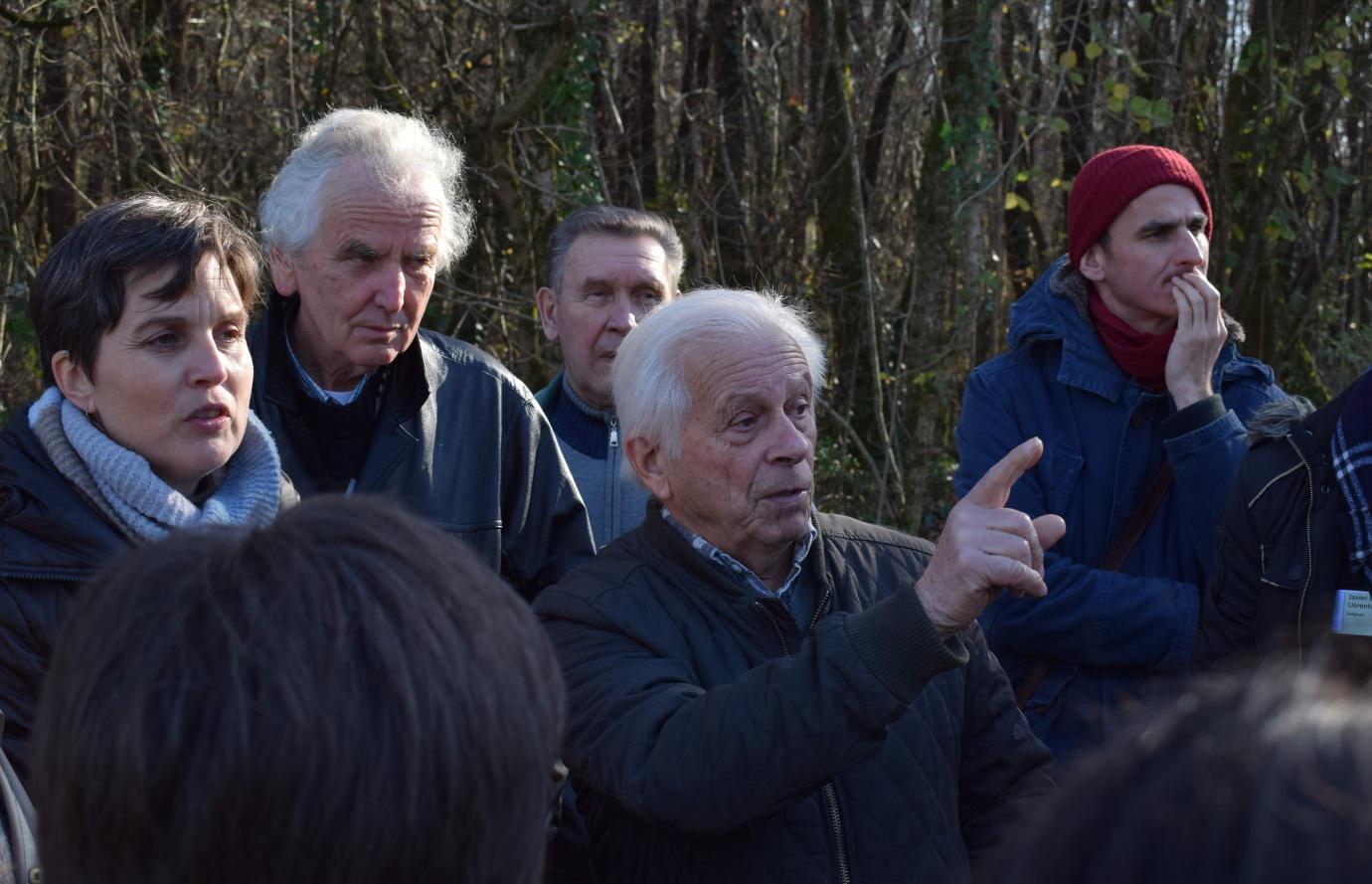30 November – 1 December 2016
First Meeting of the EIP European Focus Group on Agroforestry

40-year-old walnut-cereal silvoarable system at Les Eduts in Charente-Maritime, France, with barley being harvested on 5 July 2016 (Photograph by Philippe Van Lerberghe)

The silvoarable system as seen by the Focus Group during their visit on 30 November 2016 (Photograph by Paul Burgess)
EIP-Agri is an initiative that seeks to boost innovation in European agriculture and forestry. On 30 November and 1 December 2016, a new EIP-Agri Focus Group on Agroforestry held its first meeting at Melle in Western France. The meeting was attended by 20 participants from across Europe, including Paul Burgess, Rosa Mosquera Losada, Andrea Vityi, Fabien Balguer, Yousri Hannachi and Mareike Jäger who are working with the AGFORWARD project. The aim of the focus group is “to develop innovative agroforestry practices to facilitate the integration of woody crops in specialised crop and livestock systems” and “to develop them into sustainable farm systems that boost agricultural productivity and profitability”.
During the first day, the participants visited the walnut-cereal agroforestry system of Mr Claude Jollet at Les Eduts. Mr Jollet planted the black walnut trees (Juglans nigra) between 1973 and 1977, after being required to replant trees on an area of cleared woodland. Across about 50 ha, walnuts have been planted at an intra-row spacing of 7 m in either a woodland or agroforestry arrangement. The inter-row spacing is 7 m in the woodland system (about 200 trees per hectare), and 14 m in the agroforestry system the inter-row spacing is 14 m (about 100 trees per hectare). The cereals (e.g. barley or wheat) are planted using minimum tillage.

Mr Claude Jollet (centre) explains the innovative system
Approximately 40 years after planting the walnut, Mr Jollet reports that the cereal yield in the arable alley is about 3 tonnes per hectare compared to 7-9 tonnes per hectare in conventional fields. Although the aim is to grow the walnuts for high value timber, recently harvested trees have been sold for firewood. The productivity of the system is being studied by the Institut pour le Développement Forestier (IDF), the Association Française d'Agroforesterie (AFAF) and the Chambre d'Agriculture de Charente-Maritime as part of the AGFORWARD project (Van Lerberghe et al., 2016). The research is harvesting some of the trees to define allometric equations relating trunk and branch biomass and volume with circumference at breast height for black walnut trees in a forest and agroforestry system.
The rest of the meeting was held as a workshop at the Agricultural School of Melle. The meeting was planned and arranged by representatives from the DG Agri and the EIP Service point and the workshop part facilitated by Karin Eksvärd. Paul Burgess made a brief presentation about the work of AGFORWARD and Rosa Mosquera-Losada described the work of AFINET to “promote smart climate agriculture through the promotion of agroforestry practices”. Amongst other activities, the Focus Group discussed the enabling conditions to enable viable long-term agroforestry, and agreed to contribute to a number of “mini-papers” on key agroforestry topics ahead of a final meeting anticipated in March 2017.

The main part of the meeting took place at the Agricultural School at Melle
Further details of the Focus Group on Agroforestry can be found at:
Van Lerberghe, P., Malignier N., Hannachi, Y. (2016). Detailed system description of a case study system: Agroforestry for Arable Systems (Agroforestry for arable farmers in Western France). 18 January 2016. 9 pp.